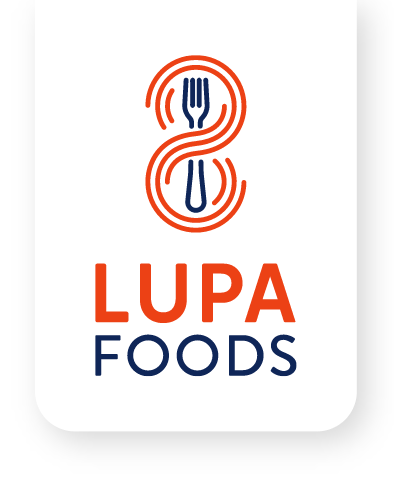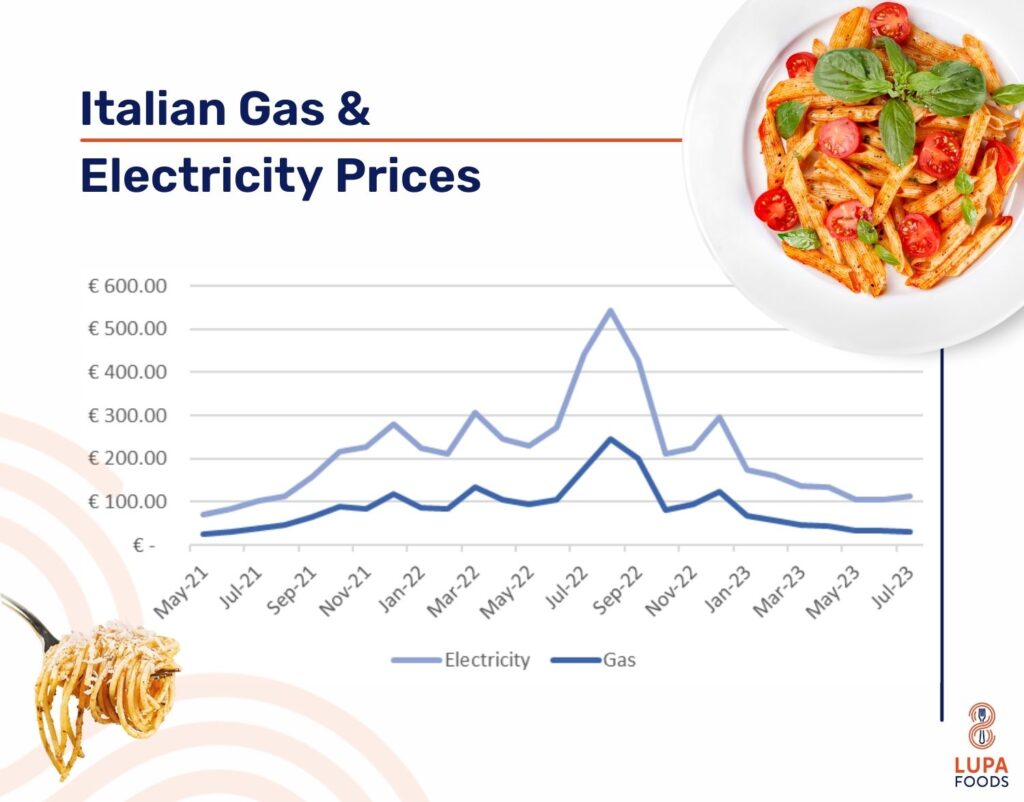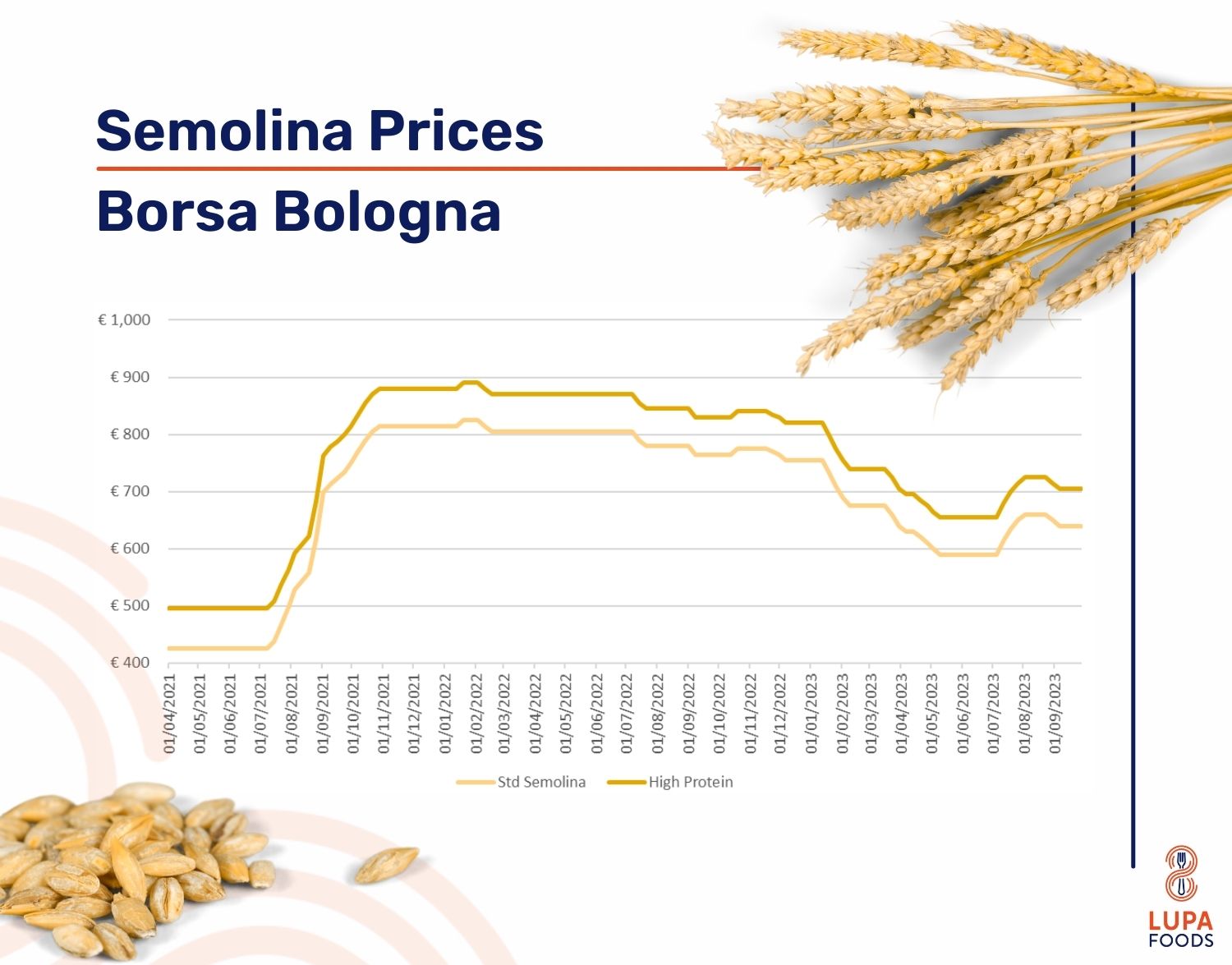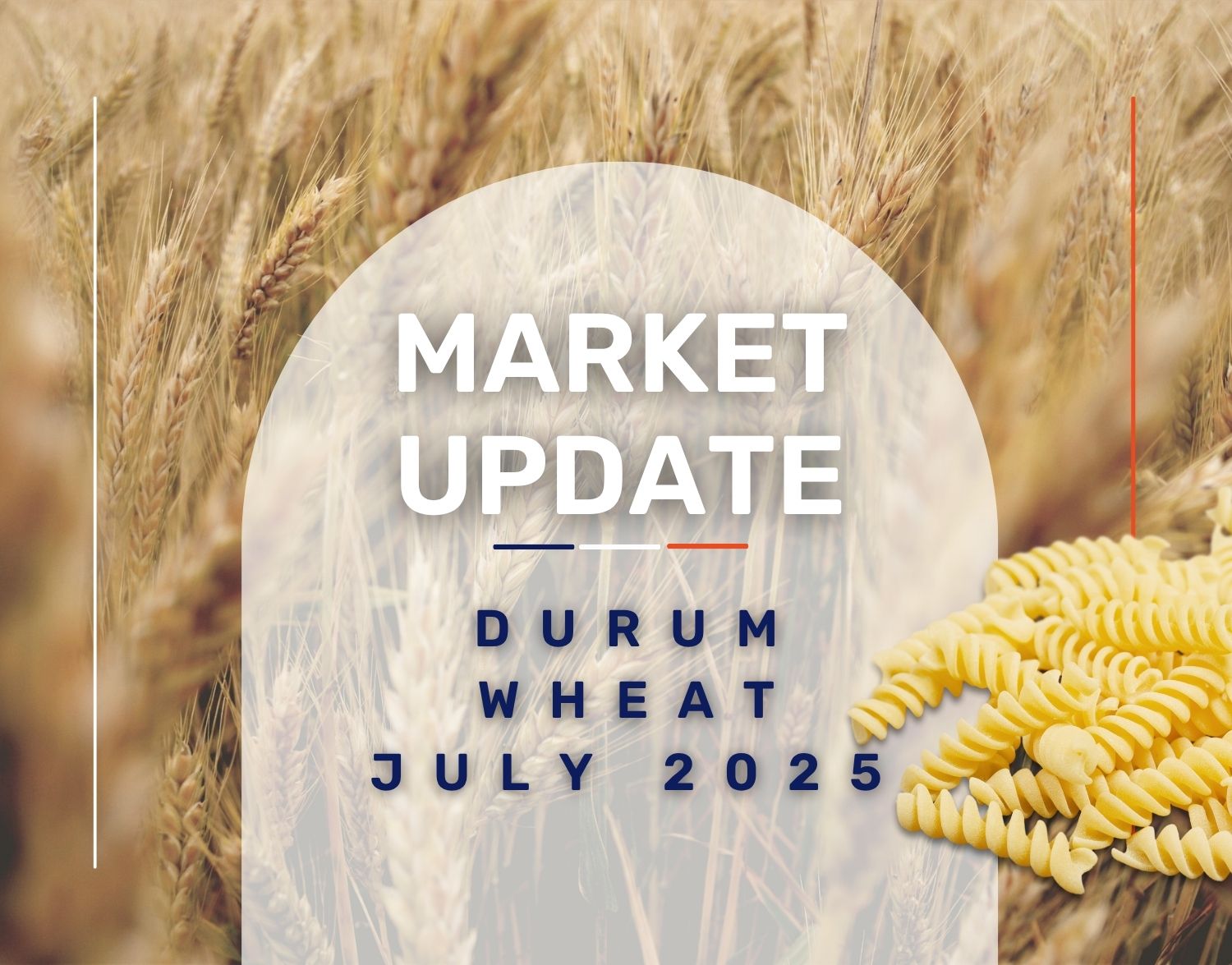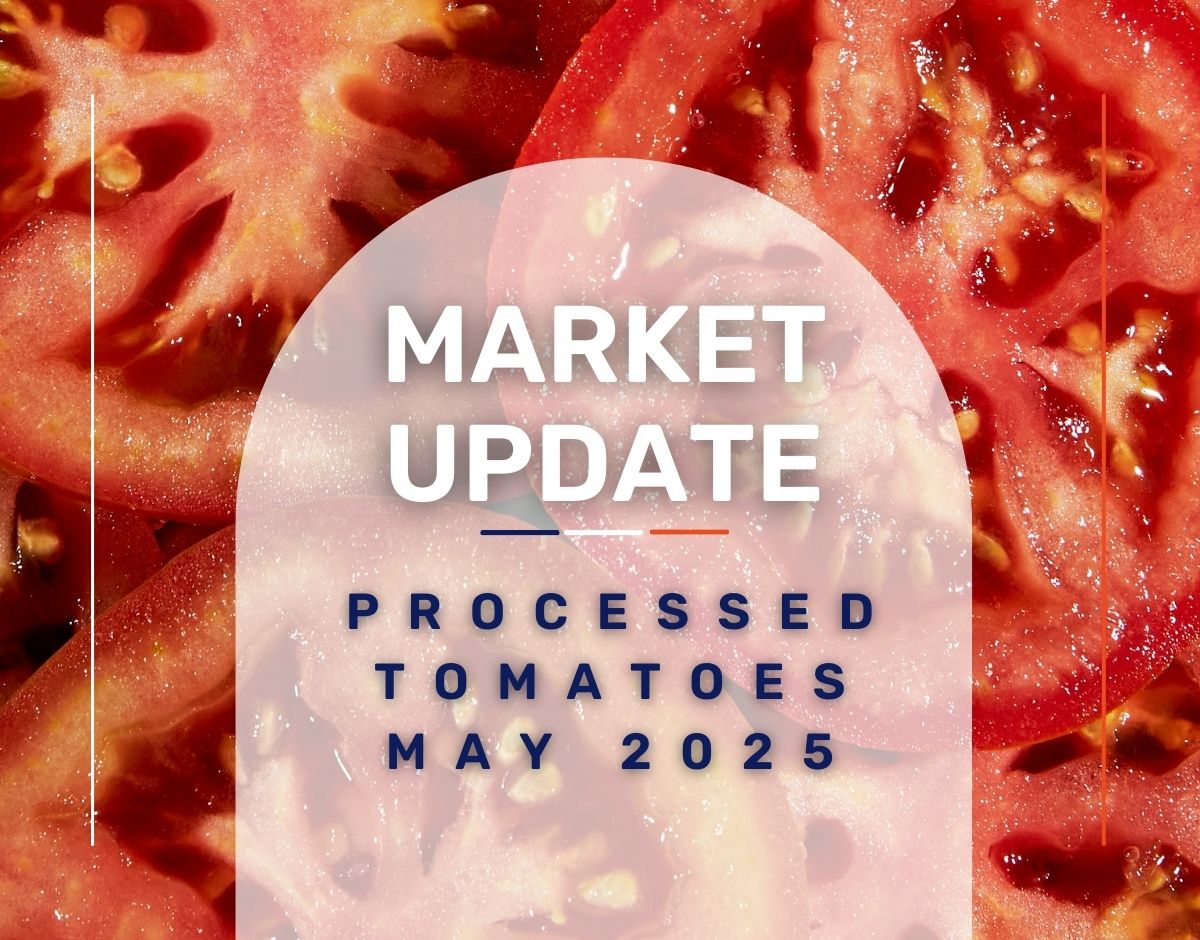Introduction
Durum wheat, a cornerstone for pasta manufacturing, is undergoing notable market transformations. This report offers an in-depth analysis of the durum wheat landscape, highlighting the integral roles of Italy and Canada in the worldwide pasta sector.
It’s crucial to recognize that durum wheat significantly influences pasta costs. While certain input and logistical expenses we’ve previously discussed may have found stability, they haven’t all reverted to their historical levels. Rather than experiencing total deflation, we’re observing a consistent stabilization in annual inflation rates on some of these.
Durum Wheat Insights
Canada
Harvest Decline: As a leading global wheat producer, Canada is experiencing a notable decline in its durum wheat harvest. The current year’s wheat crop is projected to be among the lowest in the past decade, with a significant drop from the previous year.
Reason for Decline: Adverse weather conditions, particularly dry spells in key farming regions, have impacted yields. This reduction is causing a dip in wheat stocks for major exporters, reaching some of the lowest levels in recent years.
Implications for Pasta: The reduced durum wheat production in Canada is influencing grain exchange costs. This trend is expected to impact the price of pasta in the coming months, with potential price hikes on the horizon.
The global agricultural landscape is grappling with escalating costs. Key farm inputs, including feed, fuel, and fertilizer, have witnessed a sharp uptick in prices over the past few years. While some factors have seen a decline in 2023, they have not reverted to their previous low levels, indicating a sustained pressure on the cost front.
Italy
Pasta Price Dynamics: Despite global wheat price decreases, there’s an anticipation of rising pasta prices in the domestic market. Some industry experts believe that the challenges in global wheat harvests, especially in major producing countries, will push pasta prices higher.
Domestic Durum Wheat Production: A significant percentage of pasta in Italy is made with domestically produced durum wheat. Despite global market fluctuations, the price of this domestic durum wheat witnessed a drop recently, compared to the same period in the previous year.
Market Sentiment: There’s ongoing debate regarding potential increases in pasta prices. While some attribute it to challenges in global wheat harvests, others argue that domestic durum wheat prices have remained stable, making significant price hikes for pasta unjustified.
Global Wheat Market Dynamics Impacting Italy and Canada
Weather Conditions
The current El Niño phase of the El Niño-Southern Oscillation (ENSO) is expected to last until early 2024, bringing increased precipitation to regions like southern Europe, which may influence wheat production positively in Italy.
In the northern hemisphere, the spring wheat harvest concludes under challenging conditions, especially in Canada, the US, and China. Meanwhile, the southern hemisphere, particularly Argentina and Australia, faces dry spells. While Argentina anticipates an uptick in its wheat crop, Australia’s drier conditions raise concerns about tightening global wheat supplies.
Weather patterns have played a significant role in shaping the durum wheat market thus far. For instance, prolonged droughts in Spain have severely impacted the wheat crop, leading to reduced production estimates.
Similarly, excessive rains have affected the quality of the harvest in Russia and Kazakhstan. While Argentina sees a rise in its wheat crop forecast, concerns about Australian wheat due to adverse weather conditions can tighten global wheat supplies, indirectly affecting the Italian and Canadian markets.
Quality Concerns
The quality of durum wheat, especially in Italy, is tending towards the medium-low range. Factors such as varying Test Weights (TW) and the presence of foxy grains indicate that this year’s harvest might not be up to the mark compared to previous years. The ash content, which is higher than the average of the last five years, further underscores these quality concerns.
Export Dynamics
The export behaviours of major players in the market are influencing the global durum wheat landscape. For instance, the potential availability or reintroduction of export bans by the Turkish government could be a turning point for the market. Similarly, limited exports from Russia and Kazakhstan due to low harvest quality are reshaping the supply chain.
Global Demand
China’s significant purchases of French and Australian wheat indicate a potential increase in global wheat imports, which can influence durum wheat prices. Demand remains robust across Europe, North Africa, and Turkey. This consistent demand, coupled with fluctuating supply, is a key driver in the market dynamics of durum wheat.
Geopolitical Tensions
The market is closely monitoring any potential restrictions on Russian exports and developments in new insurance options for voyages to and from Ukraine. The geopolitical tensions, especially the docking of vessels at Ukraine’s Chornomorsk port and Russia’s efforts to block shipping routes are in focus.
Stabilization
Following correction in August, the European durum wheat market (SEDWI Index) is showing signs of stabilization. This suggests the market is finding its footing after recent fluctuations. However, Russian wheat is being offered at very competitive prices, suggesting that Russia’s floor price policy might not be strictly enforced.
Forecasts
Price Trends
Historically, durum wheat prices tend to rise seasonally around this time of the year. Given the current market dynamics, especially with the quality concerns and robust demand, this trend might continue.
Volume Projections
While specific figures are not mentioned, the reduced production in countries like Spain, coupled with limited exports from Canada, Russia, and Kazakhstan, suggests that the global supply might be tighter than in previous years.
Quality Outlook
The quality of durum wheat is expected to remain a concern, especially in Europe. Factors like weather patterns and regional agricultural practices will play a crucial role in determining the quality of future harvests.
Conclusion
In conclusion, the durum wheat market is currently navigating through a phase of stabilization after recent price corrections. While demand remains strong, concerns about quality and reduced production in key regions are the primary drivers shaping the market. Looking ahead, these factors, along with export dynamics and weather patterns, will play a pivotal role in determining the trajectory of the durum wheat market.
The dynamics of durum wheat production play a crucial role in shaping global pasta prices. With Canada’s harvest facing challenges and Italy navigating domestic debates on pasta pricing, both nations, as significant stakeholders in the pasta industry, must strategize effectively to ensure market stability.
As global events and conditions continue to evolve, close monitoring and adaptive strategies will be key to navigating the challenges ahead.
Reach out to discuss your needs for the coming months and how we can assist you with your pasta requirements.
